This post is for shadowplay’s The Late Show: The Late Movies Blogathon. Please visit shadowplay to see more entries in this exceptional series!
Note: Those interested in using these posts for research, please read the notes at the bottom of this post. Thank you.
***
Hot shot speed demon Larry Evans (Rex Lease) has teamed up with the aging engineer Corbett (Tom Moore) to create a super fast, super hot new car design he plans to drive in the big race. His rival Eddie DeSilva (Duncan Reynaldo) is an evil, evil man, as you can tell because of an accent that places him somewhere across the ocean, or perhaps south of the border. After DeSilva accuses Evans of taking advantage of the washed-up Corbett, some rousing fisticuffs ensue; they part even greater enemies than before. Tragedy strikes during the race when Larry and his co-driver Steve (Charles Delaney) are injured in a terrible crash, the result of Eddie DeSilva’s sabotage. Because he’s evil, you see.
It’s somewhat surprising that Reynaldo would be cast as the stereotypical suspicious foreigner in 10 Laps to Go (1936), given that this film was produced by Fanchon Royer, one of the few female producers in Hollywood and known for encouraging studios to create positive Latino/Latina characters and produce well-constructed Spanish language films. Royer worked mostly on Poverty Row, and had a reputation for putting out low budget but smartly produced product. Her films were nearly always released “state’s rights;” that is, released to smaller independent companies throughout the U.S. who usually distributed the films to territories rather than individual states, making the term a bit of a misnomer. 10 Laps to Go is no exception, and its very limited release and low production quality meant it made almost no cinematic impact. It appears to only be known nowadays because it was licensed to late-night television in the 1950s, where it was likely seen by more people than on its original theatrical release.
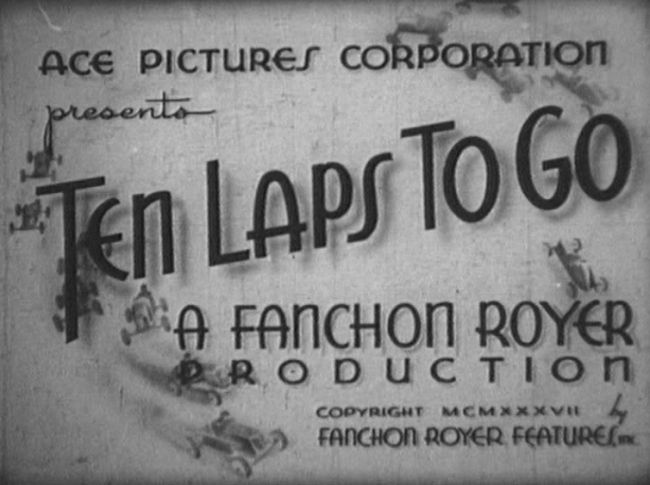 I sure hope adorable was the look they were going for, because those little cars are adorable.
I sure hope adorable was the look they were going for, because those little cars are adorable.
Auto racing in the 1930s was, as you can imagine, an unnecessarily dangerous sport. The cars were under a strict weight limit, and often raced without a roof or any security measures, meaning the results of a crash were catastrophic. The type of racing in 10 Laps to Go is a mystery to me; the vehicles are two-seater roadsters, I presume Indy cars, with a passenger pumping (gas, I believe) on occasion, and though you never see passengers leaning to counterbalance on sharp turns I have to assume they do. Classic Motor History has a photo of the same type of car used in 10 Laps, stating that two-man cars were popular in the 1930s, but it was a fad that did not last long.
And indeed, the fad does not last in 10 Laps to Go, either. Steve and Larry are seriously hurt in the crash — and the film uses what appears to be actual footage of a race car crash, which is unpleasant. Steve’s injuries are relatively minor, and after a few days of convalescence, Steve heads off with Corbett to work on a new midget racer while Larry is left behind, paralyzed from the waist down.
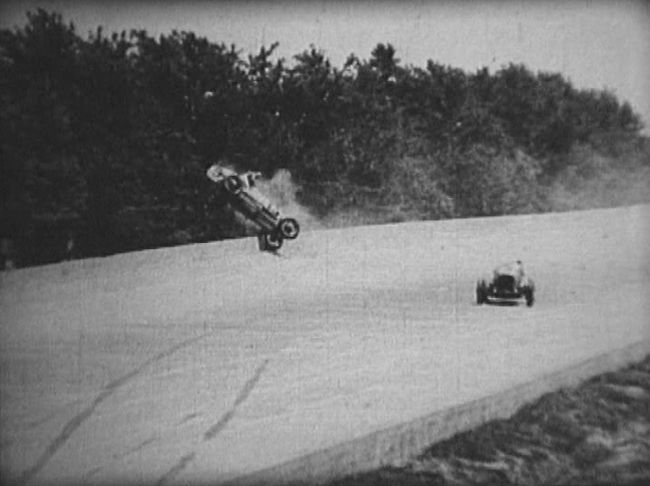 What appears to be actual crash footage. There is another crash later in the film, though after lengthy and careful research (I used the pause button a couple of times) I’m convinced they used an articulated dummy for the later scenes.
What appears to be actual crash footage. There is another crash later in the film, though after lengthy and careful research (I used the pause button a couple of times) I’m convinced they used an articulated dummy for the later scenes.
Midget cars were first raced in California in 1933 and became quite popular by the mid 1930s, which explains why 10 Laps essentially takes the entire cast from the first act of the film and moves them to California for the remainder of the film. That particular plot point seems unnecessary unless one knows a little history of auto racing or, perhaps, spends 45 minutes online trying to obtain some kind of basic knowledge of the sport as it existed in 1936.
Complications arise — as if an evil nemesis and severe injuries weren’t complicated enough — thanks to a couple of dames. Larry is mad about the first dame, Corbett’s daughter Norma, played by Muriel Evans. Evans was a starlet whose popularity had slowly increased throughout the pre-Code era, leading to featured small roles in Heat Lightning and Manhattan Melodrama (both 1934). Then Hollywood, the fickle bastard it is, lost interest in the actress. By 1936, Evans was just beginning to transition into low-budget Westerns, like so many others in the cast of 10 Laps; most were either veterans of cheapie Westerns and shorts, or their careers were heading in that direction just as Evans’ was.
Muriel is a curious addition to the cast, an actress still exhibiting that unmistakeable polished starlet sheen underneath off-the-rack discount fashions and a hair full of cheap setting lotion that may have just been some leftover men’s pomade. Whatever it was, it was certainly bulletproof. Her career didn’t continue much past 10 Laps; she retired in 1940, and after starring in a movie called Home Boner (1939), I think anyone would choose to retire, even if it was a comedy short.
Evans is a weak actress, and her character Norma is not what one would call consistent. She’s supposed to be glamorous and intelligent, though can’t understand why Larry, a nationally-known daredevil race car driver, courts the press. She finds publicity so distasteful that when he is lying in the hospital after the crash, nearly unconscious but still trying to play tough like nothing is wrong, she can’t see through his thin disguise. The man is crying and clearly in distress; as she chews him out for being a horrible person, a nurse has to inform her that Larry has passed out from the pain again.
It’s a scene that one has to consider merely poorly done rather than deliberately cruel. The writers were unable to craft a convincing conflict and an actress with limited ability, coupled with such a low budget that the production only had enough money to bandage one of the actors, meant Larry appeared unharmed moments after being on death’s door, complete with concerned sidekick and Vaseline lens. The lack of visual identifiers to his wounds was rather stupidly used as a plot point; still, the scene is a harsh one, with a critically-wounded Larry so determined to show off for a hot blonde that he would put on an enormous act of bravado while on the verge of unconsciousness, and Norma so angry and self-absorbed that she wouldn’t even see the presumed blood and bruises, the tears, and wouldn’t notice when he passed out.
The writers responsible for this tragicomic attempt at drama are William Bloechden and Charles R. Condon. Bloechden hardly worked in Hollywood at all, and Condon is several orders of magnitude less accomplished and interesting than his sister, Miss Mabel Condon. A successful journalist, writer and film producer in the 1910s, Mabel owned her own company, Mabel Condon Film Exchange, with offices located in the Hollywood Security Building at Hollywood and Cahuenga Blvds. She was known for interviews with the top movie stars of the day, and wrote numerous articles about the process of filmmaking, which was still new to the general public. She spent her days traveling between New York and Los Angeles, managing plays, working on motion picture publicity, writing serialized adaptations of popular movies for magazines, and was an agent for authors, screenwriters and actors, including a young Boris Karloff, who credited her with starting his career in silents by getting him a part in The Deadlier Sex (1920).
Mabel gave her brother Charles a job in her companies after the First World War. He was never as successful as his sister, though nowadays is marginally better known simply because he has a larger and more correct IMDb listing. Her career seems to have ended in 1923 when she married the well-known, almost legendary publicist and journalist Russell Birdwell, who was only 19 years old at the time.
It’s telling that the second most interesting part of 10 Laps to Go is the sister of one of the horrible, no good, awful writers of this thing. The most interesting thing about this film is the other troublesome dame, and the reason why this movie was chosen for The Late Show Blogathon: Marie Prevost.
This low-budget state’s rights affair was Marie’s final film, released in December of 1936, just weeks before she was found dead in her apartment. By the time she filmed 10 Laps in the fall of 1936, she was just about a decade out from the career-killing year of 1927. As I’ve mentioned before, Marie was quite lucky to have been a star after her Bathing Beauty days, as the Beauties were considered old hat toward the end of the silent era. But Marie had gotten a role in Ernst Lubitsch’s The Marriage Circle in the mid-20s, and the director’s praise for her performance was almost unending.
Less pleased were her co-stars Florence Vidor and Adolphe Menjou. Menjou was a colossal asshole, such an unrepentant, bitter, entitled little man that to this day, people are still affected by his deliberate undercutting of others’ careers — don’t take my word for it, ask James Cromwell. Menjou was incensed that Lubitsch had praised both Marie and Monte Blue in The Marriage Circle, and indeed, their performances are top notch, even sublime, while Menjou was merely competent and Vidor was bland and boring.
Blue would later say in an interview that the fallout from Menjou’s fit was that the studio deliberately kept him and Marie in lower-tier films, with the exception of a few times when Lubitsch fought to use them again. They were good roles, but it wasn’t enough to really allow either of them to ascend to the next level of stardom.
Marie arguably fared better than Blue, having looks that kept her on magazine covers constantly throughout the 1920s. But 1926 and 1927 were tough years for her personally and professionally. As an actress, she was reaching that certain age, those two years of her age she cut off back in the 1920s not helping her one bit once the pre-Code era began. She was associated with passé entertainment like Sennett shorts and silent films, and the industry couldn’t get enough of making fun of the woman who only a couple of years earlier was touted as a remarkable beauty, now a slightly chubby lady who drank too much and was nearing 40.
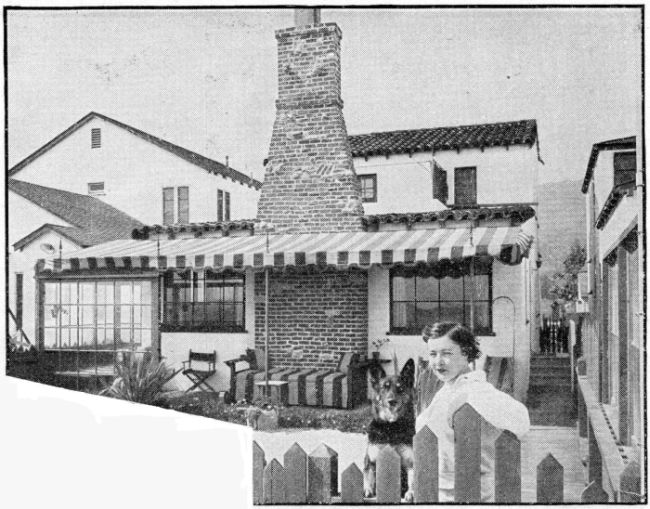 From a 1932 Photoplay article, showing Marie in the back yard of her new home in Malibu.
From a 1932 Photoplay article, showing Marie in the back yard of her new home in Malibu.
And the drinking was indeed affecting her performances. In The Godless Girl, the 1929 Cecil B. DeMille silent, she looks terrific, but loses her footing on occasion and every so often gets that thousand-yard stare that can mean only one thing. In her first scenes during Ladies of Leisure (1930), her eyes can’t focus and they don’t blink at the same time.
That’s why it’s remarkable that in 10 Laps to Go, the film she would make just a couple of months before her alcoholism killed her, there isn’t much sign of her illness to be found. She’s not at the top of her acting game in the least, reciting goofy dialogue in a very unconvincing way, though I would suspect languishing in Poverty Row in a film with a featured scene where the size of her ass is the only joke to be had might put a damper on her performance. In hindsight we assume her performance is also hindered by drink and, presumably, emotional state, but watching it in December, 1936, you’d probably never guess. Here in the super futuristic year of 2012, we’re more than familiar with how a celebrity acts when in trouble; it’s an integral (and profitable) part of our modern day bread and circuses. But Marie doesn’t have that tell-tale train wreck appearance. She never stumbles on her lines, and while she is uninspired she is focused, intelligible, with appropriate range of emotions — and 10 Laps is not the kind of film that would indulge in more than maybe two takes per scene, or where editing could cover up a troubled actor. You can guarantee that if Marie Prevost looked like she was putting in a solid B-level acting job, then she was.
As Elsie the waitress, Steve’s worry-wart and slightly ditzy girlfriend, Marie provides most of the comedy relief. There is a brief early bit of comedy with an older crew member, played by veteran Western actor Lloyd Ingraham, where the humor is that he’s old and can’t hear. Oh, will the hilarity never cease?
The bits with Elsie as comic relief are weak as well, which is why her first scenes are of her humming tunelessly and trying to stack oranges and failing. It’s hilarious because… oranges can roll, I guess? As the bit continues, things become awkward because Elsie has no lines. I suspect her lack of lines — she responds to Larry when he orders lunch with a “Hmph!” and nothing else — is indicative of an impromptu gag made up on the spot and sandwiched in to the scene without finesse.
One gets the impression that the production was tickled to have Marie in the film, in part because of those scenes that seem to be added in to expand the part. She also gets some lovely close-ups, and even though she’s a little puffy and pale, older of course — time stops for none of us — she looks good.
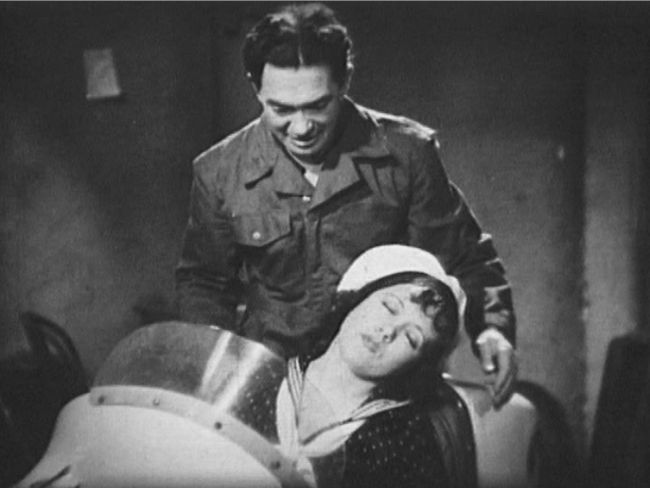 Marie “stuck” in the midget car seat, after being told to go limp by her husband who is about to lift her out of the car.
Marie “stuck” in the midget car seat, after being told to go limp by her husband who is about to lift her out of the car.
Somewhat disturbingly, at least in hindsight, is that Marie was obviously dieting. A couple of her outfits are clearly too large for her, especially a cute outfit with sporty, high-wasted palazzo pants, very similar to these. The pants bunch up quite a bit below the waist, exactly as you would expect trousers of this style to do if they were too big. Having just watched Ladies of Leisure again, I’m confident that Marie weighed less here than she had in 1930. She was dieting, no question, and alcoholism is insidious in that it prevents a person from absorbing what they eat. If someone isn’t eating much and drinking at the same time, they are in trouble. And Marie was in trouble, destined to die just a few months later.
Elsie wavers between crankiness and overprotectiveness, worrying about Steve constantly. When he survives the crash, she marries him, hoping to talk him out of the racing biz. The couple move to California, though, so Steve can work with Corbett on his midget car design. She apparently doesn’t succeed in her plan to get Steve to try another profession, though we don’t know this until Larry arrives in California, healed and walking again, some indeterminate time having passed. A hilarious and brief exchange between Larry and Steve as they get reacquainted has them both saying a lot has happened, but “I’ll tell you later,” which of course they never do. It’s an almost offensively cheap trick to gloss over dialogue the writers were too lazy to deal with.
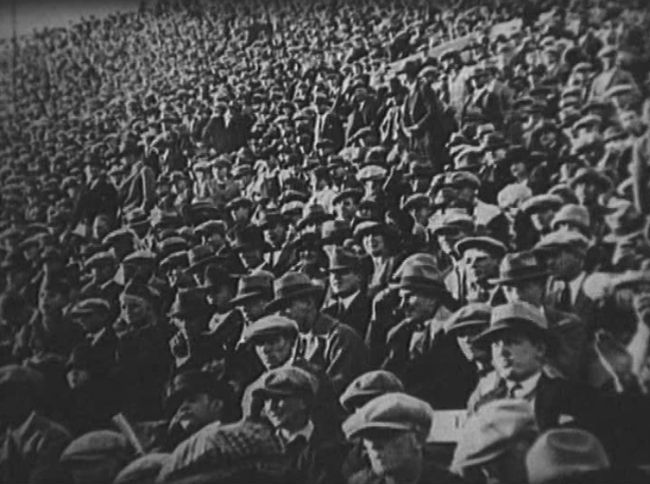 “Think fedoras grow on trees? No, they grow on heads! Here at Frank’s Fedora Farm, we grow only the finest quality headgear, harvested by expert milliners and shipped in state-of-the-art refrigerated trucks to your home town…”
“Think fedoras grow on trees? No, they grow on heads! Here at Frank’s Fedora Farm, we grow only the finest quality headgear, harvested by expert milliners and shipped in state-of-the-art refrigerated trucks to your home town…”
Steve brings Larry in on the Corbett car project, though Larry, after the wreck, can’t drive professionally because of what we would nowadays identify as post-traumatic stress disorder. Meanwhile DeSilva, who is also in California for no reason other than poor screenwriting, plots to get Corbett’s plans for the new supercharged race car. He hires some thugs, including one played by legendary stunt man and actor Yakima Canutt, to break into Corbett’s garage to steal the schematics needed to make their own hot rod to hell. Larry and Ellen give chase, and DeSilva, caught in an awkward situation, tags along to allay suspicion.
The car chase scene is unquestionably the best scene in the film. Rex Lease puts in a surprisingly solid performance given the production was clearly a low priority for most people involved. Noted for his appearances in Westerns and Abbott and Costello flicks, plus a few small parts in bigger-budget films like The Grapes of Wrath (1940) and The Unholy Wife (1957), Lease had a lengthy and respectable career. The man was in so many Westerns that the fact that I’ve mentioned him on my blog before my BBFF Ivan has is nothing short of a small miracle.
Lease’s earlier scenes in the hospital while paralyzed were quite good, his tears believable, but all undermined by ridiculous writing and poor performances by everyone else. Here, his sweaty, wide-eyed fear is just as effective, but thanks to Madge Evans being kept quiet and Duncan Reynaldo’s solid acting chops, the chase scene is a delightful surprise in this otherwise below-mediocre movie. The tension derives in the chase from some poor but agitating bluescreen action, but also the drone of the cars as they speed along dirt roads, with DeSilva pressing Larry to drive faster, Larry near tears. DeSilva is trying to keep up appearances, but also surely knows how difficult it is for Larry to be speeding along after the crash. Eventually DeSilva takes over driving from Larry, but the crooks, who are of course DeSilva’s cohorts, have long disappeared.
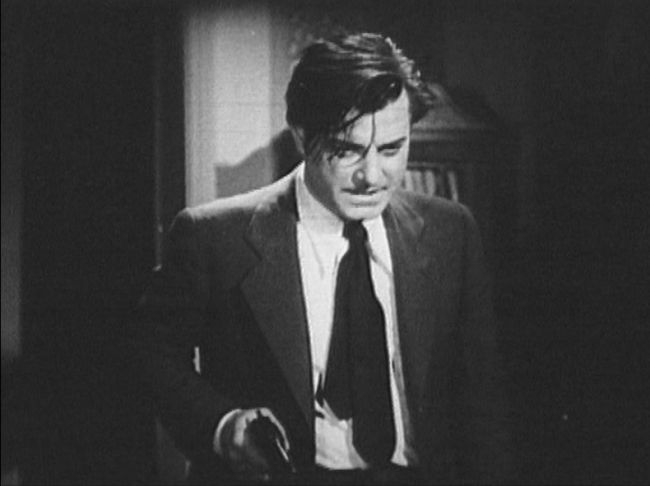 Rex Lease puts in a decent performance, especially when he gets his Chester Morris on.
Rex Lease puts in a decent performance, especially when he gets his Chester Morris on.
Larry and Norma are apparently still attracted to each other, though you wouldn’t know it by the way they act. She also tentatively dates DeSilva, who uses this as an in with Corbett to suggest a pal of his as driver of Corbett’s midget car. The pal is in on the scheme and instructed to throw the race. Sadly, pal Lou is one of the worst actors I’ve ever had the displeasure to watch on screen, and I say that as someone who has seen that guy in Birdemic who can’t even walk naturally. In a film that is already barely holding on to the audience’s attention, the moment Eddie Davis appears is the moment where anyone still giving the flick a chance is going to put down their popcorn and move on with their lives.
After a cursory investigation the film’s production team felt was sufficient to get the point across, Larry discovers DeSilva’s plans. He rushes to the track and has Lou pulled from the car, and takes over… with ten laps to go!
It’s all very exciting, of course, as he dons some goggles and speeds away, his shell shock from the wreck forgotten, the race won handily.
As a little example of just how low budget 10 Laps is, I’d like to submit to you two screencaps. The first is Elsie, Norma and her father Corbett watching the race immediately before Steve and Larry wreck, a few months before they all move to California:
And here is one after everyone has moved to California to get into the midget car biz:
The set is, what, an old shipping box painted grey, with an interchangeable background and three dining room chairs? Very convincing as grandstands. And despite changing the actor’s clothes, removing some of the wood on that railing and placing the dining room chairs in a different order, it’s obvious this is the same set, even the same day of filming.
Larry wins the race and the girl, while Steve punches one of the hoodlums involved in the scheme out. When Elsie hears about this, she goes barreling into the fight, scolding her husband and beating the stuffing out of the bad guy herself. And the movie fades, and we’re left with this sad little battleaxe-wife joke in a zero-budget disaster as the last moments of Marie Prevost on film.
***
Sources:
Stardust and Shadows, Charles Foster
Hollywood and the Foreign Touch, Harry Waldeman and Anthony Slide
Celluloid Mavericks, Greg Merritt
Poverty Row Studios, Michael R. Pitts
Silent Players, Anthony Slide
Los Angeles from the mountains to the sea, Volume 3, John Steven McGroarty
Texas Biographical Dictionary, Volume 1, Jan Onofrio
Bad Women: The Regulation of Female Sexuality in Early American Cinema, Janet Staiger
Boris Karloff: A Bio-Bibliography, Beverly Bare Buehrer
***
If you’re interesting in using these posts for research, please note the following:
1) You can use my blog posts for sources, but they must be credited in footnotes or bibliography (as should any book, blog, magazine, or other source). You cannot just cut and paste sections of my blog into your own work. Please know that I will not just ignore copyright infringement, should it occur.
2) There may be errors in my blog posts. You’re responsible for doing your own research and verifying anything you read.
3) I will not help you with your Marie Prevost research. Please don’t ask.
4) I own some memorabilia, photos, archival docs, etc., but I do not lend them out for any reason. Please don’t ask.
5) Despite any claim you may have heard to the contrary, I have not assisted nor collaborated with anyone in their book or article on Marie Prevost.
For more details, read here. Thank you for understanding.
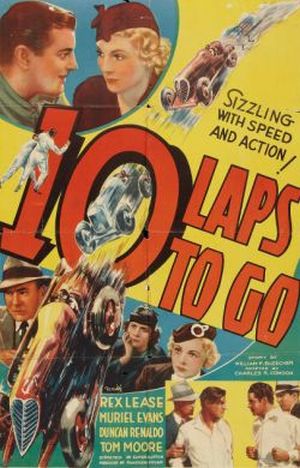
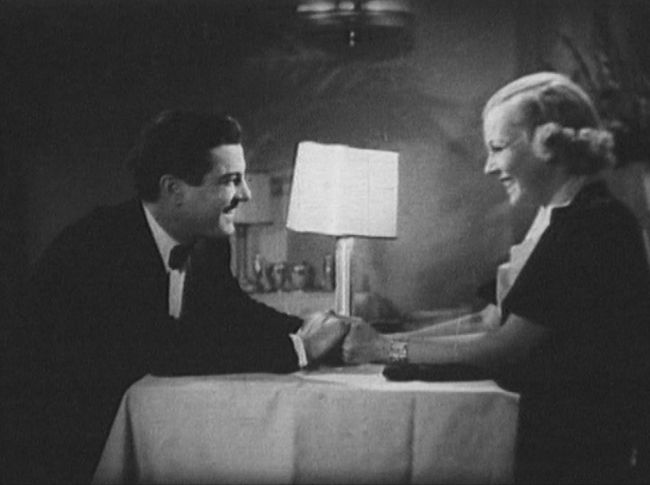
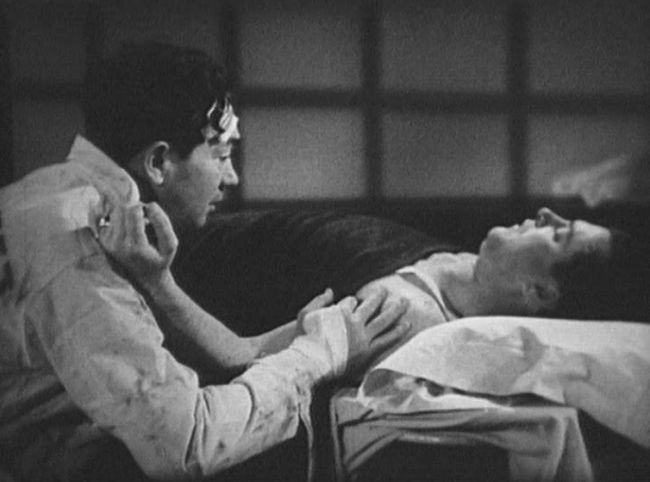
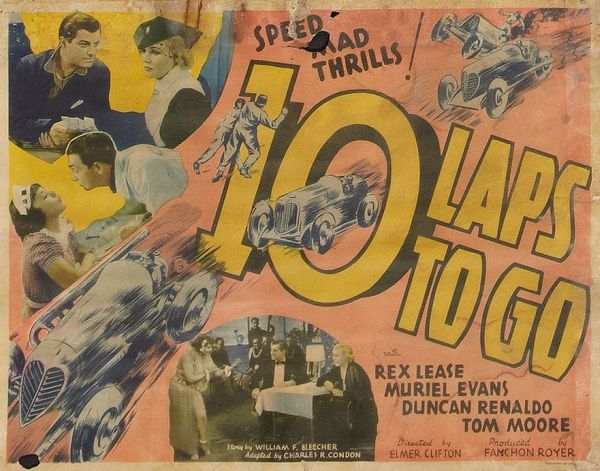
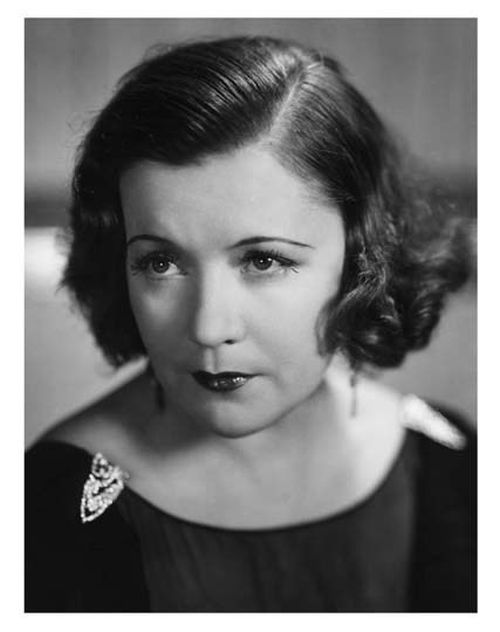
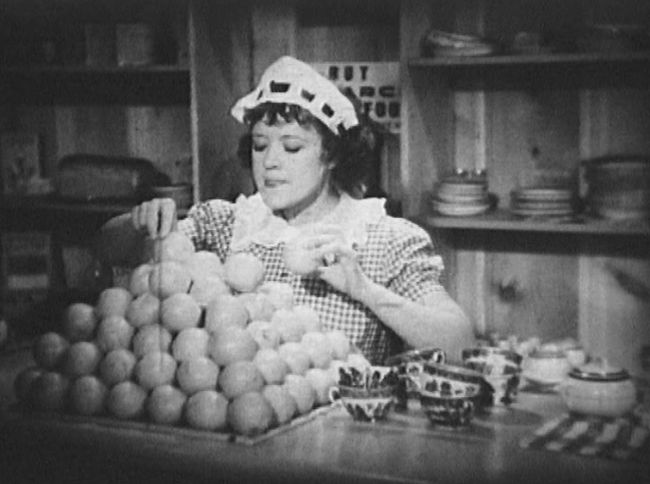
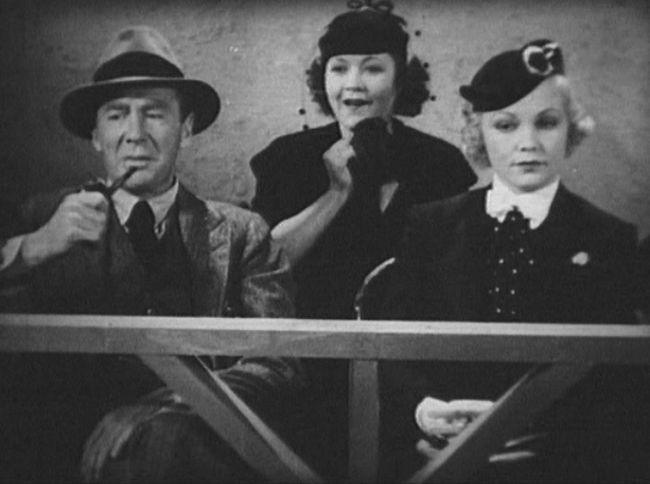
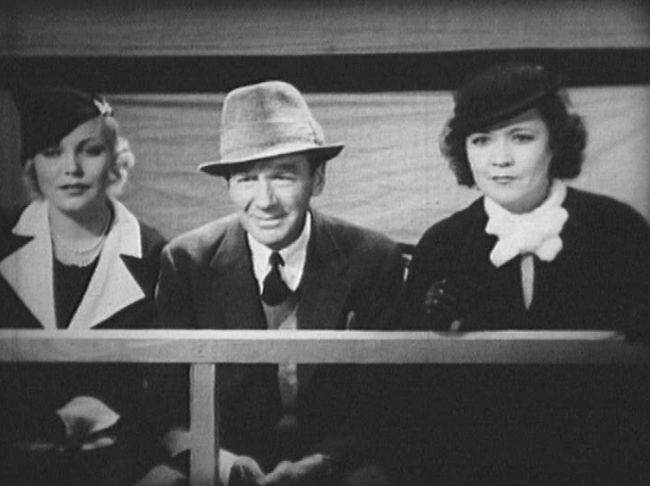
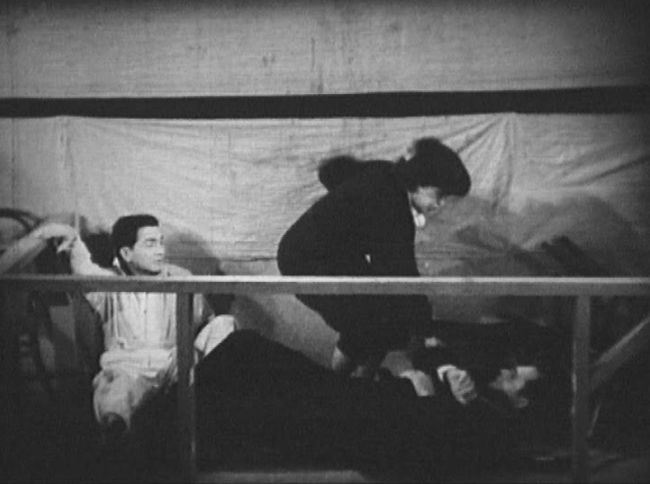
Great posting, thanks! I learned so much!
I always enjoy Adolphe Menjou onscreen, personally, and like him in The Marriage Circle — so I struggle to reconcile his amusing screen presence with the colossal cast-iron dick he clearly seems to have been as a private individual.
The man was in so many Westerns that the fact that I’ve mentioned him on my blog before my BBFF Ivan has is nothing short of a small miracle.
And you scoffed at the thought of me not being able to spit a piece of honey bun across the room…ha!
I know Muriel Evans primarily for her appearances in many of the Charley Chase shorts (she was Chase’s favorite leading lady). But, yeah…she was in a metric ton of B-westerns.
And a mutual acquaintance of ours (I shall refrain from mentioning him even though by all rights I should publicly shame him) wrote a recent essay on State of the Union in which Menjou’s actions are made the stuff of heroism. Talk about having one’s gob smacked.
A lot of people love Menjou, and I only recently realized what an asshat he was. My first inkling was the Monte Blue interview, then I saw other anecdotes, and the James Cromwell story just sealed the deal.
Everybody in this film was in so many Westerns! Marie was the only one who wasn’t, though I suspect she would have headed that way in the 1940s had she lived.
It’s often difficult to reconcile the personal life of an actor with their private one, and with Menjou, it’s a STRUGGLE. There are several pre-codes I really enjoy him in, but if I saw him walking down the street, I’d probably cross to the other side.
Thanks for hosting the ‘thon! I’m hoping to catch up on everyone’s entries tonight!
Menjou found the perfect role in Paths of Glory, in which his General Broulard is the embodiment of his true-life dickishness. Oddly enough, I also like Menjou in his turn in The Sniper as a cop named “Kafka.”
Hi, Stacya! This must be a cool movie and hope to find it someday to watch. Curiously, for the blogathon I also wrote about a lady who died early, in 1937, whose last film was about races, bu not horse races instead of car races.
Don’t forget to read my Saratoga entry for the blogathon! :)
Greetings!
Wonderfully evocative article, if ultimately so sad a story. But “super futuristic year of 2012” will keep me happy for months! Not sure if this anecdote ever appeared here, but here goes–supposedly Leo Gorcey once tried to solicit a Hollywood charity contribution from Menjou at his front door, and he refused. Gorcey then gave Menjou an earful. I wish I witnessed this!